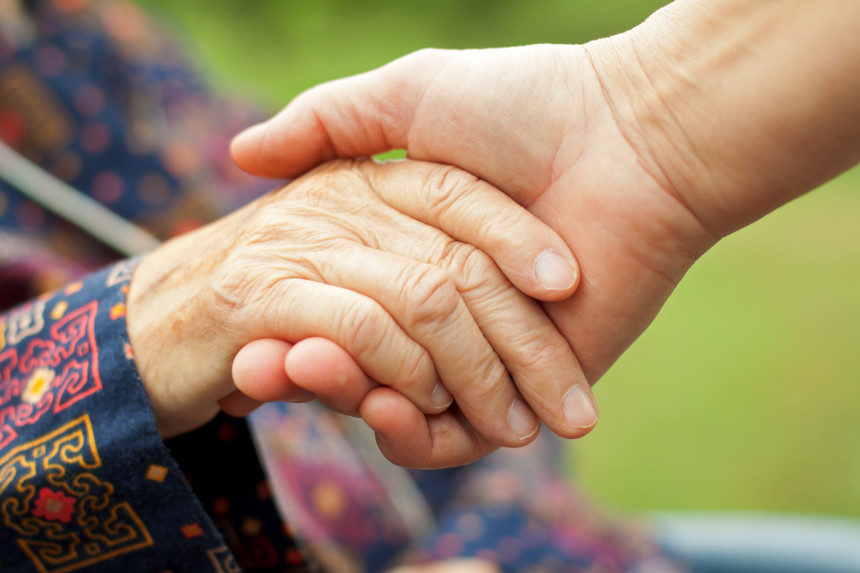On March 30, 2020, the COVID-19 pandemic rendered silent the vibrant skilled nursing community where I worked. All the doors were closed, with residents in solitary confinement in their rooms. Corridors, where days prior nurses bantered, became eerily quiescent. The chafing dishes in the café were empty. The bingo set in the lounge gathered dust.
The extraordinary circumstances of pandemic life had altered my role in the units, too. In normal times, my work as a geropsychologist — a mental health provider who specializes in treating older adult patients — involves conducting therapy sessions to help patients manage depression, anxiety, changes in health and ability status, and other medical and mental health conditions. Usually, I help patients, family members, and staff better tailor care of the residents in our skilled nursing environment, and make safe plans for discharge.
But as our long-term residents missed out on visits from loved ones, and had fewer social outlets and activities to enjoy, part of my job became providing companionship, entertainment, and comfort. In a way, the change provided a salve for my own pandemic anxieties — my mother was out of work and newly diagnosed with lymphoma; we had two deaths in the family (one due to COVID, another likely due to pandemic-related isolation); and I was carrying the weight of many struggling patients. The combined pressure and isolation felt unbearable at times. The work helped me through.
For the first weeks of the pandemic, the silence in the corridors remained. The intern and fellow I supervised were sent home to telework from new laptops. Most of my fellow psychologists in the hospital worked from home offices, too. Even I had a brief telework spell, after the first residents and staff tested positive for COVID in early April 2020. But a few weeks later, I returned to the hospital. There was only so much teletherapy my patients could do.
Returning felt like a trip down Alice’s rabbit hole into a new world of masks, gloves, and face shields, restrictions on group activities and visitors, throat and nose swabs (at first once, later twice a week), and a permanent cloud of ennui among residents and staff alike. My former office, where I used to see patients, had become a COVID overflow hospital room. So I worked out of a trailer-like edifice across the street, making quick runs to the hospital to do bedside psychotherapy with residents in their rooms.
When I started visiting the patients in person, I resumed the usual therapy duties, providing cognitive-behavioral work for depression and chronic pain; reminiscence and life review for patients at end-of-life; and caregiver support sessions. But I was aware that business as usual would not be enough. Researchers know that loneliness and social isolation have detrimental effects on individual health — as detrimental to health as smoking; new studies of COVID isolation suggest that older adults suffered even greater loneliness over the course of the pandemic.
With the patients so painfully impacted by prolonged isolation, I needed to step up my role as friend and confidante—it was the only way to alleviate suffering in the increasingly confined environment. My job had always focused on short-term patients receiving rehab or hospice services; during the pandemic, I started more actively following long-term residents, many of whom were suffering from new bouts of depression, loneliness, and anxiety. For example, Ms. Carlisle, the feisty and creative centenarian on our hospice wing, had always turned down psychology services in the past. To help pull her from her depression, I began reading her poems and Beatrix Potter, and helping her write letters to her many friends at the independent living facility where she used to reside.
Pre-pandemic, Mr. Baker, a patient in his 70s who suffers from PTSD and dementia, happily spent his days in the common room, greeting passersby and engaging in group games and activities as best he could. He was not a good candidate for therapy, as his conversational abilities were fairly limited. My weekly visits became an important point of contact in the absence of the recreational opportunities he once had loved. I’d sit by his side, feed him Cheez Doodles, talk with him about his service in Vietnam and his nights stateside going to “liquor houses,” and groove along with him to Jimmy Reed and Fats Domino.
Music became an essential tool in my work. Per COVID guidelines, we weren’t allowed to sing, but we could listen, and music was a vehicle for reminiscence, communication, and connection. Spotify on my phone’s tinny speakers served as a jukebox for my patients: the man at end-of-life on hospice, hugging a posterboard photo of his late wife as we listened to Roberta Flack’s “The First Time Ever I Saw Your Face”; the long-term resident who was unable to leave his bed and could speak only faintly, drifting off the otherworldliness of Pink Floyd; the agitated younger resident who would briefly relax if Tupac was playing.
Over and over again, the new order of closed doors opened my therapy practice to increased spontaneity, and opportunities for connection. In graduate school, we were taught to provide talk therapy as a means of alleviating distress, meted in 50-minute sessions in neutral outpatient spaces. Now here I was, running around a half-empty hospital facility, doing things I never thought part of my job: bringing a dying man the Dr. Pepper he craved, playing chess with a long-term resident with dementia, offering coping skills and support to nurses and nursing assistants, and helping train an intern and a postdoc sitting at workstations in their homes. Even though I transitioned this past summer into a largely outpatient role within palliative care, those formative early pandemic experiences have made me a more flexible, adaptable, and generous clinician and co-worker.
Reflecting now, in the wake of so much loss and tragedy, the joyous moments stand out. I’ll never forget a rainy afternoon when I made a visit to a resident during one of the most desolate days of the pandemic. As the precipitation beat down, I had an idea: “Ms. Dubois, would you like to hear the rain?” Ms. Dubois could barely see or hear, and she’d typically spend the day listening to CNN on her hearing aids.
In my weeks sitting with her during the pandemic, I had learned that she was a lover of nature and all things poetic. I opened the door from her room onto the water-logged courtyard, and cranked up her pocket talker to its highest volume. As the downpour reached a crescendo, I saw her smile beaming through the pouring skies.
*All names and identities in this essay have been altered to protect patient confidentiality.
Craig Libman is a clinical psychologist at a hospital in North Carolina, specializing in palliative care and geriatrics.
Originally published on Zócalo Public Square. Primary Editor: Eryn Brown | Secondary Editor: Sarah Rothbard
Featured image: Shutterstock
Become a Saturday Evening Post member and enjoy unlimited access. Subscribe now



